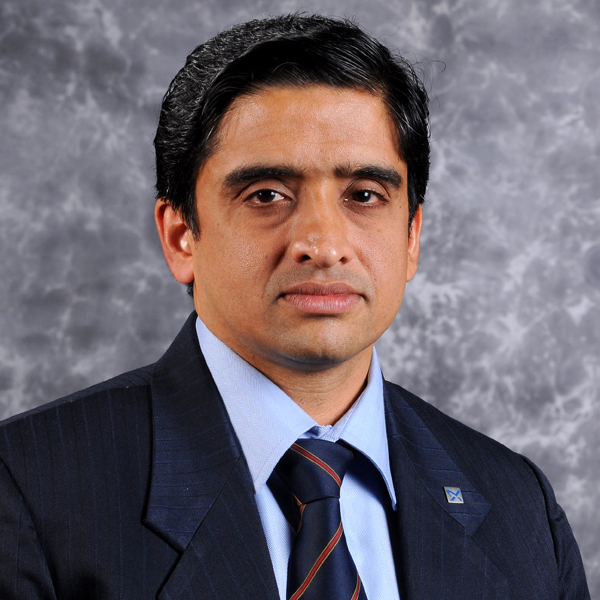Demand for better pumps and hydronic systems in retrofit projects has increased in the GCC region due to changes in legislation relating to building efficiency
Gangaprasad GuruRaja Rao, Director, Regional Sales Development for Commercial Building Services (India, Middle East, Africa), Grundfos, says that the water pump market size in the GCC region is approximately AED 4.5 billion, with the pumps market for hydronic systems catering to comfort cooling estimated to be around AED 2 billion. Rao adds that the Saudi Arabia market size for water pumps is estimated to be approximately AED 1.8 billion, while the UAE market is approximately AED 1.2 billion. These are big numbers and inspire confidence.
Touching on the market preferences in the GCC region, Prashanth BS Iyengar, Head, Business Development & Marketing, Middle East & GCC Region, FJ Group, says that there is a rise in demand for smart pumps and hydronic systems, particularly in the buildings sector. “The GCC region,” he says, “is increasingly interested in smart technologies and automation, to improve performance and reduce energy use.” There is also a trend towards renewable energy sources, like solar power, and thus, an increase in demand for pumps and hydronic systems that are compatible with these technologies, he says. “It is also important to note that market preferences may vary due to local regulations, economic conditions and consumer demand,” he adds.
There has also been a rising demand for improved pumps and hydronic systems in HVAC retrofit projects in recent years, Iyengar says, adding that it can be attributed to several factors, including increasing concerns about energy efficiency, sustainability and cost-effectiveness. “Upgrading HVAC systems is a key solution to reduce energy consumption and operating costs,” he says. “Moreover, replacing inefficient pumps and hydronic systems with advanced models will result in substantial energy savings, reduce greenhouse gas emission as well as enhance the overall performance of the HVAC systems and sustainability.”
Kevin Laidler, Sales Director, Armstrong Fluid Technology, Middle East and Africa, also speaks about retrofitting opportunities aplenty. He highlight how Armstrong recently implemented a complete system retrofit for the Park Hyatt Hotel in Msheireb Downtown, in Doha, Qatar, among other retrofit projects.

Kevin Laidler
Laidler says the demand for better pumps and hydronic systems in retrofit projects has increased in the GCC region due to changes in legislation regarding building efficiency. He says: “The UAE is, in fact, spearheading a retrofit movement to improve the energy performance of existing buildings and reduce carbon emissions. According to estimates, 30,000 buildings across Dubai will be retrofitted before the end of 2030, to achieve a 30% reduction in energy demand. The retrofits are predicted to save over USD 22.33 billion and reduce emissions by 1 million tCO2.” He also points out that retrofitting outdated pumps and hydronic systems has been flagged as the most effective place to start on the path to decarbonisation, given that air conditioning accounts for a staggering 50-70% of energy demand in cities, and that the average pumping efficiency around the world is less than 40%.

Gangaprasad GuruRaja Rao
And like Iyengar, Laidler speaks of a significant shift in customer values towards more advanced technologies, such as the Pump Manager, an AI-based active performance management software that uses advanced cloud analytics to modulate system output and enable remote monitoring capabilities. “This demand for advanced products is increasing as customers recognise the long-term cost savings of investing in energy-efficient technologies, despite a higher upfront investment,” he says.
Weighing in on the topic of advanced pumping technologies, Rao says customers in the GCC region are open to newer technologies with high-value proposition.
By way of further emphasising on advanced technologies, Laidler says: “One of the latest advancements in pumps and hydronic systems is the variable control technology that can be mounted onto the pump using Parallel Sensorless technology. This innovative technology will enable pumps to operate at optimal efficiency, reduce wear and tear and extend the motor life cycle, reduce total power consumption and save additional costs.” He adds that one of the main benefits of Parallel Sensorless technology for local projects is the appropriate handling of redundancy.
For his part, Rao says distributed pumping technology is a paradigm shift in the hydronic systems, which can make the system up to 30% more efficient than the conventional variable primary systems.
Another advancement, he says, is the IE5 permanent magnet motor, which is approximately, 10% more efficient than the IE3 motor. He adds, “These innovations make the buildings efficient by having high pumping performance, which further helps the countries to have smaller carbon footprints, become more sustainable and be one step closer to their net-zero goals.”
Additionally, Rao says, “Tier A projects in the GCC region demand highly efficient, digital, smart, and reliable products, but there are also projects that still go by initial investment rather than running cost, and that is where we at Grundfos work with designers and clients to educate them with the latest technologies. The idea is to make them focus on OpEx and IRR or ROI rather than CapEx.”

Prashanth BS Iyengar
The consensus is that performance matters a lot, which means it makes sense to focus on OpEx. Iyengar highlights two common issues that impact pump performance, namely coupling and flange failure, which occur due to improper maintenance, misalignment, cracks, corrosion, improper lubrication, incorrect torque and excessive vibration. “HVAC pumps, which are crucial to HVAC systems, may encounter several maintenance issues in the circuit that include clogged or dirty filters, leaks, electrical issues and bearing failures,” he says. “These will, in turn, lead to increased energy consumption and reduced efficiency.”
Iyengar highlights the importance of following the manufacturer’s maintenance recommendations and of ensuring proper installation by qualified professionals to prevent breakdowns and to prolong the lifespan of HVAC pumps.
A well-designed, installed and maintained pumping system, Rao says, will have longevity and avoid costly breakdowns. He points out that some of the reasons for premature failures, such as poor design, oversized pumping systems and incorrect commissioning, often fail components. “Therefore, it is advisable to select a pump that operates near its Best Efficiency Point (BEP),” he says. “And installation and commissioning should be done by the authorised service provider to avoid such issues and prolong the life of the equipment.” He also adds that, following a maintenance schedule, per the manufacturer’s installation and operation manual, would ensure the smooth functioning of the pumping system.
The impact of the pandemic
Business opportunities in the post-pandemic market landscape seems promising
The ongoing construction boom in Saudi Arabia, Laidler says, has been enhancing the growth of business opportunities in the GCC region. He says the total value of real estate projects, planned or under construction, in Saudi Arabia is estimated to be USD 877 billion. Laidler also points out that business opportunities are driven by the increasing focus on energy efficiency in the GCC region, especially in line with national development plans, such as Saudi Vision 2030 or the UAE Energy Strategy 2050. Additionally, Rao highlights that the change in focus towards non-oil sectors, such as tourism, also contribute to the rise in business opportunities in the GCC region.
Expanding on the business opportunities in the GCC region, Iyengar points out that there are indications of economic activity and business opportunities picking up, as the companies adapt to the new reality created by the pandemic. He says: “Some of the changes to note include the development of new products and services, moving operations online, development of local manufacturing and distribution channels, and restructuring of supply chains to mitigate market disruptions or to enter a new market. The pandemic has taught us the significance of agility and resilience in businesses, and companies that adapt to unique circumstances and seize opportunities are poised to succeed in the post-pandemic era.”
Iyengar adds that the pandemic has also brought significant changes in customer behaviour and product demands. For instance, he says, while there is an increase in demand for specific pump types used in medical equipment or water treatment facilities, there is a decline in demand for specific products in the oil & gas industry. “The pandemic has also accelerated the adoption of digital and remote monitoring technologies for pumps, as companies sought ways to manage their operations remotely and reduce on-site visits,” he says. He also highlights that it has become essential for companies to highlight the value of their products or services, beyond the cost, to build stronger customer relationships and differentiate from competitors.
Rao says, “We have been seeing a rise in the number of customers who focus on ESG compliance along with energy-efficient buildings.” He also notes that remote working and increased demand for digital solutions are also making the life of facility management professionals more comfortable, as they now get to operate pumps and hydronic systems remotely using a mobile application.
Laidler offers a different perspective on customer behaviour and points out North America’s and Europe’s influence on the local shift in customer behaviour. He says that these two regions, being the first to implement strategies for energy reduction and smart consumption, benefit heavily from them, and inspire countries in the Middle East and Africa to follow suit. He also highlights the importance of educating key stakeholders about the latest technologies.
In the GCC region, the pandemic significantly impacted the demand for advanced pumps and hydronic systems solutions, notes Iyengar, mainly because people started to spend more time indoors. He points out that as a response, many HVAC pump companies began to develop and promote products that reduce the risk of transmission of disease, including adopting contactless technology solutions such as touchless controls, remote monitoring systems, and online maintenance and support services. “The pandemic’s economic uncertainty,” he adds, “has also led to a shift towards energy-efficient HVAC pump solutions in the GCC, with companies developing and promoting high-efficiency pumps, variable speed drives, and energy management systems to reduce energy consumption and costs.”
Copyright © 2006-2025 - CPI Industry. All rights reserved.